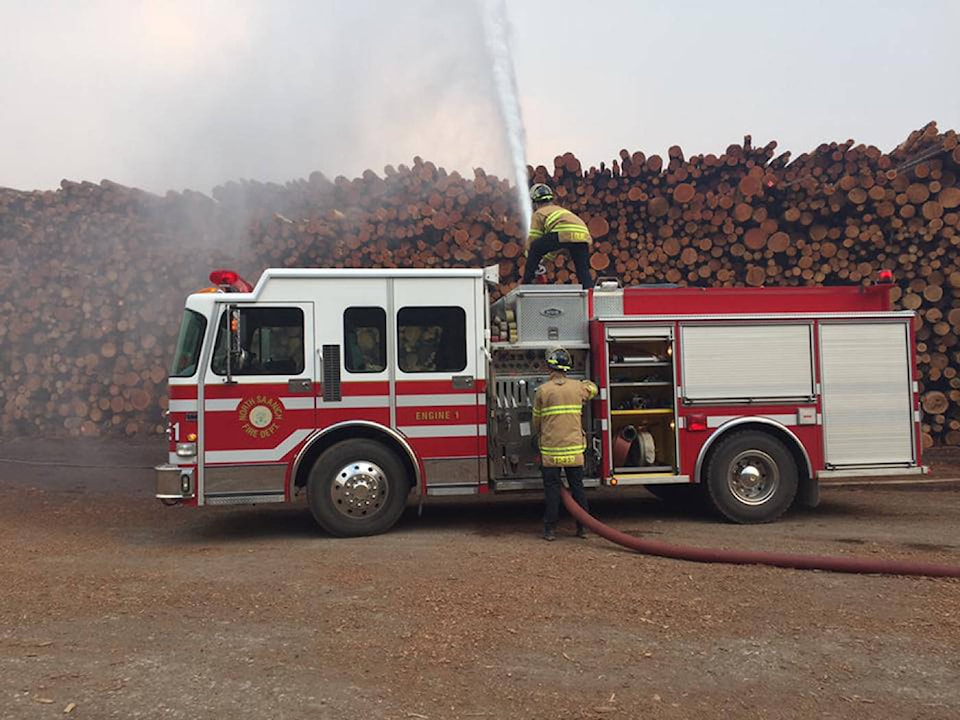Tim Collins/News staff
Sidney Fire Chief Brett Mikkelson recalls working the night shift at the Elephant Hill fire where he and his crew were deployed. They were working to protect the homes and other structures in the surrounding communities and, for 30 days, they did precisely that, mindful of the threats to their own safety, but determined to do the job.
Mikkelson was himself there for a seven-day period during that time.
“It was unpredictable and dangerous. You’d look up the hills and could see the fire on the mountainside and you knew the wind could shift at any time. So much of the hillside was burnt out, and every so often a great burning tree would collapse and roll down the hills. If it crossed the road it could cause another fire and endanger homes. We were there to make sure that didn’t happen,” said Mikkelson.
He added that the sheer size and magnitude of the fires were startling to some firefighters who had never experienced fighting this kind of fire.
“You’re out there, really fighting mother nature. This isn’t an apartment fire. You look up and an entire mountain is on fire and in that moment, it’s very humbling,” he said.
Steve Knapp, the Deputy Fire Chief for North Saanich spoke of a similar experience. He did his own seven-day stint on the fire line as part of the rotating commitment of his crews to the fire fighting effort.
“It was very surreal. We were in Williams Lake and the fire was in sight and we knew we had to try to save the homes and businesses there. But then you’d turn around and, because it had been evacuated, it was like a ghost town. There were none of the normal sounds; not even a dog barking,” recalled Knapp.
He described the experience as both educational and dangerous.
“We had a couple of guys who had to bug out pretty quickly a few times as the wind shifted. It was really pretty overwhelming. These guys were working 14 to 16 hours a day. It was gruelling work but we’d all do it again in a heartbeat.”
Knapp said that his crew were primarily involved in “fire-smarting” homes to prevent the fires from catching hold on those structures.
“It was really amazing what people left lying around, close to their homes. There were stacks of fire wood, cardboard boxes, even plastic toys. It was a real eye opener, and it gave us a chance, not only to save homes and businesses, but to learn from the experience,” explained Knapp , adding that, in the future, a wildfire could break out in our own forests on the peninsula and when it does, the crews will know what to do.
Mikkelson was also well aware of the importance of safeguarding homes and businesses in the fire zones.
“The work we were doing was critical. If the mills or the grazing land burn, and the people who were evacuated return and have no way of making a living, well, then the fire has won. We were there to make sure they had something to come back to.”



